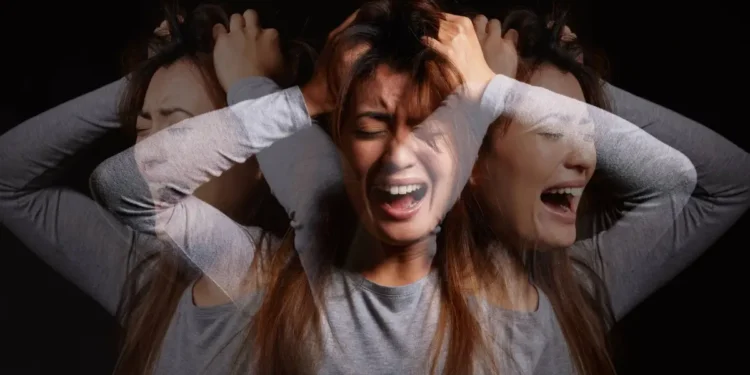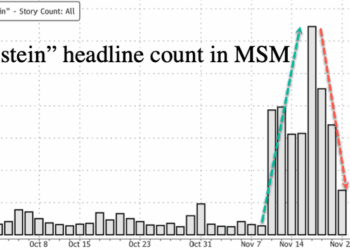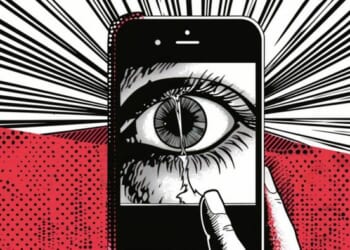by Mary Grabar Ph.D., is a resident fellow at The Alexander Hamilton Institute for the Study of Western Civilization.
Severe untreated mental illness is a scourge upon American life and a danger both to those who are ill and those who live in their presence.
Numerous studies show that the untreated seriously mentally ill are more violent; 63% of mass shooters are mentally ill. Over 25% of on-duty deaths of police officers occur during Emotionally Disturbed Person calls.
The mentally ill are 16 times more likely to be killed during an encounter with police.
They are four times as likely to abuse drugs and alcohol than those without a mental disorder (23% versus 6%).
They are a drain on the court system.
They make up at least 20% of inmates in jails and prisons.
They serve longer prison terms than the non-mentally ill, often accruing new charges while on parole or in prison.
They make up a large portion of the homeless living on our streets. At least 25% of the homeless on American streets are severely mentally ill.
Will President Trump Be Able to Undo Decades of Insane Policy?
The mentally ill homeless have been a problem since the state institutions, due to federal policy and court decisions, began closing their doors in the 1960s. By the 1980s, homelessness reached a critical point. In the mainstream media, the problem was blamed on President Ronald Reagan.
The New York Times was at the lead. In the final days of Reagan’s presidency, their headline, “Reagan on Homelessness: Many Choose to Live in the Streets,” continued the false narrative about his heartlessness by quoting from his December 22, 1988, interview. Reagan, in commenting that the homeless avoid shelters, said, “They [the homeless] make it their own choice for staying out there.” He also repeated his contention that “a large proportion” was “mentally impaired.” They had been released from institutions as a result of lawsuits brought by the American Civil Liberties Union and similar groups and “walked away from those institutions — they wanted freedom, but they walked out to where there was nothing for them.”
Reporter Steven V. Roberts tried to spin Reagan’s comments by noting that experts did agree that many of the homeless “suffer from mental impairment, as well as drug addiction, alcoholism,” and “other personal problems,” but then added that a growing number were healthy, with over 20% holding part-time or full-time jobs.
Indeed, a small percentage of homelessness may be due to poverty. But Reagan was correct and his assessment is still correct: two-thirds of the homeless are mentally ill or drug-addicted.
Closing Down the Asylums
Deinstitutionalization began with the John F. Kennedy administration, through the Interagency Committee on Mental Health and the Mental Health Retardation Facilities Construction Act, which led to Congress creating 789 Community Mental Health Centers.
Then, with the encouragement of President Lyndon Johnson, Congress approved of federal funding of CMHCs. Meanwhile, the Institutions for Mental Diseases exclusion of the 1965 Medicaid law denied funding to facilities with more than sixteen beds. But only 3.6% to 6.5% of those being released from psychiatric institutions were served by the CMHCs.
The establishment of the Supplemental Security Income program for the aged, blind, and disabled in 1972 excluded state institutions, thus further incentivizing states to close down their mental asylums.
As Sally Satel, American Enterprise Institute fellow and Yale University School of Medicine lecturer, wrote recently, the problem was exacerbated by the 1999 Superior Court case Olmstead v. L.C. and “subsequent decisions by lower courts applying it,” and then litigation by disability advocates and sometimes the Justice Department’s own Civil Rights Division, which forced states to “prioritize moving profoundly disabled patients into community care.” Olmstead said that “people with disabilities have the right under the Americans with Disabilities Act to receive state-funded support and services in the community rather than in institutions.” But community treatment facilities are usually inadequate for the seriously mentally ill who are not capable of seeking treatment on their own.
Psychiatry for Politics
As the nation became roiled in violence and rioting in the late 1960s, psychiatrists increasingly began to see their roles as “change agents,” becoming politically involved in alleviating what they saw as the causes of mental illness, such as poverty and racism. The profession became infused with identity politics.
Falsely believing that severe mental illness can be prevented, and believing in the left-wing notion that equity can solve societal problems, government bureaucrats, such as an National Institute of Mental Health upper staff member during the Nixon years advocated a “redistribution of wealth.” The federal focus through the NIMH was on unproven “prevention” programs. Although severe mental illness may be exacerbated by environmental conditions, its origins are biological. It cannot be prevented. Yet, the focus continued in the area of prevention, such as mental health screenings for school children, which are invasive and potentially harmful.
Today, such agencies as Substance Abuse and Mental Health Services Administration and professional associations continue to lobby for funding for their ineffective prevention programs.
Due to what a former editor of the Diagnostic and Statistical Manual called “diagnostic inflation,” such diagnoses as “normal grief” or eating four times a day, began appearing in the manual.
The late advocate DJ Jaffe, in his book, Insane Consequences: How the Mental Health Industry Fails the Mentally Ill (published the year before he died of leukemia in 2018), wrote, “By 2009, 41% of SSI recipients under age 65 (and about half of children) qualified for SSI on the basis of mental illness.” He reported, “Of the $147 billion the federal government budgeted for mental health in 2014, $85 billion was spent on income support” through SSI and SSDI (Social Security Disability Income). $62 billion went to research and support. Fraud became rampant in SSDI as the mental disability definition expanded.
Furthermore, these funds come with no strings attached for treatment. Many of the mentally ill handed over their checks to the unregulated facilities housing them.
Ludicrously, funds appropriated by Congress are being distributed by SAMHSA to programs that are not evidence-based, i.e., independently proven to produce a meaningful outcome in the seriously mentally ill. Instead, some are going to antipsychiatry organizations that deny that mental illness exists and often oppose treatment.
President Trump’s Executive Order
President Trump, with his July 24, 2025, Executive Order, “Ending Crime and Disorder on America’s Streets,” may be able to fulfill some of President Reagan’s goals and stop this cycle of madness.
Trump’s approach seems to be a return to the old standard that maintained that there is a line between sanity and insanity. Serious mental illness, according to the Center for Mental Health Services results “’in functional impairment which substantially interferes with or limits one or more major life activities.’” It includes schizophrenia, severe bipolar disorder, and severe depression. It’s also like the standard for pornography: you know when you see and hear it, e.g., someone screaming nonsensical words or claiming to be the Messiah.
Jaffe wrote approvingly that Trump’s 2016 policy platform “called for freeing parents of the seriously mentally ill from HIPAA Handcuffs [Health Insurance Portability and Accountability Act], reforming the mental health system, and using mental health resources to reduce violence. He has said he will ‘drain the swamp’ in Washington, and no swamp is more fetid than the one at SAMHSA and CMHS.” According to Dr. E. Fuller Torrey, HIPAA privacy laws are designed to protect the caregivers and the mental health agencies, and do not protect the patient.
Trump’s Executive Order calls for taking the mentally ill off the streets and into treatment programs. It appears to be the first step of Trump’s “Agenda 47: Ending the Nightmare of the Homeless, Drug Addicts, and Dangerously Deranged” as he outlined in an April 18, 2023, statement. In spite of its blunt title and Trump’s remarks about prioritizing “the rights and safety of the hardworking, law-abiding citizens,” who often have to “step over piles of needles and waste,” Trump’s policy is in agreement with that of advocates Jaffe and Dr. E. Fuller Torrey, a psychiatrist who had worked for 15 years at a Washington, D.C., clinic serving the homeless with severe mental illness. In 1998, Torrey founded the Treatment Advocacy Center, which promotes compassionate proactive treatment of the severely mentally ill, including involuntary inpatient or court-ordered and monitored treatment.
Indeed, Trump said in 2023 that there is “nothing compassionate about letting these individuals live in filth and squalor.” The severely mentally ill, he promised, would be brought “back to mental institutions, where they belong, with the goal of reintegrating them back into society once they are well enough to manage.”
The Executive Order will, through the Justice Department, roll back regulations that keep states and businesses from removing homeless people from the streets. It will use federal funding to incentivize officials to “enforce prohibitions on open illicit drug use, urban camping and loitering, and urban squatting.” Funds will be shifted away from “harm reduction” programs, such as “drug injection sites” offering clean drug paraphernalia. Instead of going to programs to house homeless people, money will go to programs that first require sobriety and treatment.
The executive order is supported by Sally Satel, who wrote recently, “If the order is implemented — which will require cooperation from the courts, state and local governments, and others — it could spark an unprecedented mobilization of resources to bring desperately needed help to millions of the most vulnerable Americans.”
The benefit, specifically, according to Lisa Dailey, Executive Director of the Treatment Advocacy Center will be to “incentivize programs” with discretionary funds from the “DOJ, and in some cases other agencies,” which can use their administrative authority to reverse regulations. Such a “carrot-and-stick approach,” she says, “is a common way for the federal government to influence state practice.”
The order aligns with that of the Treatment Advocacy Center’s proactive approach, which, when necessary, involves involuntary treatment because severe mental illness — unlike other illnesses — presents a unique challenge: the afflicted often are incapable of recognizing that they have an illness. They have what is called anosognosia, which as Dr. Torrey explains, “occurs when specific areas of the brain are damaged.”
In addition to afflicting those suffering from Alzheimer’s disease and some stroke victims, anosognosia is found in up to 50% of those with untreated schizophrenia and 40% of those with untreated bipolar disorder. Such individuals cannot be trusted to take care of themselves, especially when it comes to taking medication. These individuals need involuntary treatment either in a psychiatric facility or through court-ordered and court-monitored Assisted Outpatient Therapy. Medication can improve the individual’s awareness of his or her illness and aid in recovery, according to Dailey.
In his book, American Psychosis: How the Federal Government Destroyed the Mental Illness Treatment System, Dr. Torrey cites multiple studies which show that “patients on AOT have a dramatic decrease in rehospitalization, victimization, and incarceration in jails and prisons.”
Seeking Asylums
Infrastructure is probably “the biggest unknown and the question we’ve encountered most since the order was issued,” says Dailey.
The “dire shortage of psychiatric treatment beds,” will present a challenge. “We are anticipating federal initiatives that will incentivize states to add facilities and staffed treatment beds, such as through reform of the discriminatory IMD exclusion” of Medicaid. Such efforts, combined with an increased use of court oversight, she says “will start to keep those with [Serious Mental Illness] from falling out of treatment and back onto our streets.” Satel writes that if Trump overturns the “most excessive Olmstead-inspired agreements and consent decrees, states will be freed to focus on restoring hospital bed capacity.”
Another reform would involve the revision of HIPAA patient privacy regulations that are often over-strenuously adhered to and keep parents and other relatives from helping their loved ones. The TAC website features harrowing accounts by parents who were rendered helpless when they wanted to help their adult children.
The revision of HIPAA patient privacy regulations is among the solutions that Jaffe suggested; others included cutting waste, bureaucracy, and focusing on the sickest. Some, including Satel, however, see a conflict between President Trump’s reform ambitions and cuts in Medicaid.
There is an opportunity to make educated cuts to wasteful, dangerous, and politicized programs. Safe and effective asylums, given adequate oversight, can be established. They would save money on the repeated imprisonments and court appearances that the seriously mentally ill now undergo.
The harmful policies of the 1960s can be reversed. Americans can take back power from the State and bureaucracy and use it to help those in crisis.

















